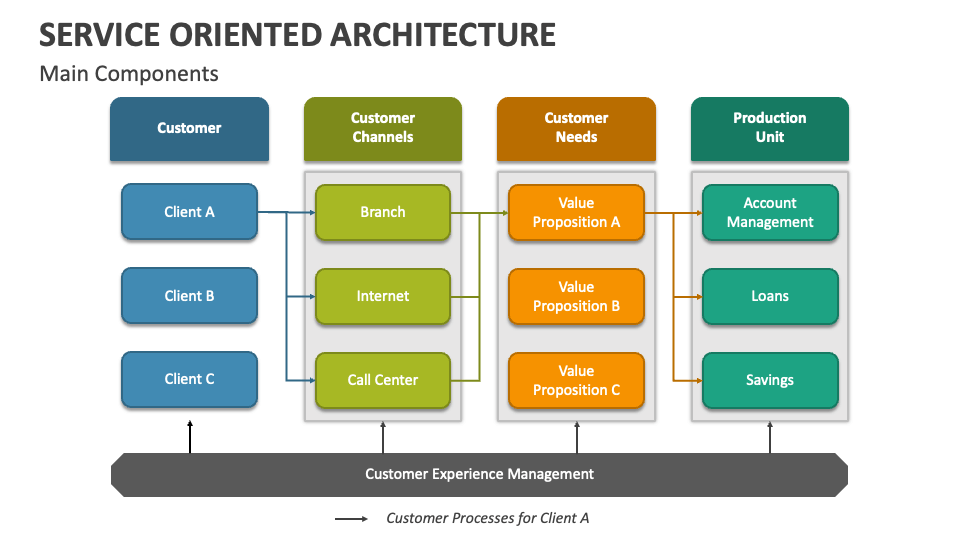Enhanced Performance SOA OS23
Did you know that businesses can boost productivity by up to 30% by optimizing their IT infrastructure? In today’s fast-paced business environment, having an efficient and robust system is crucial for success. This is where Enhanced Performance SOA OS23 steps in, delivering a next-generation solution built to significantly boost system efficiency.
SOA OS23 is an advanced architecture that ensures businesses operate more efficiently. By adopting this optimized system, organizations can expect significant enhancements in their overall performance, leading to reduced operational costs and improved productivity.
Key Takeaways
- SOA OS23 enhances business productivity by optimizing IT infrastructure.
- The advanced architecture of SOA OS23 ensures efficient operation.
- Adopting SOA OS23 leads to significant performance enhancements.
- Businesses can expect reduced operational costs with SOA OS23.
- Improved productivity is a key benefit of using SOA OS23.
Understanding SOA OS23 Architecture
Understanding the intricacies of SOA OS23 architecture is crucial for leveraging its full potential in system optimization. SOA OS23 is built on the principles of Service-Oriented Architecture, a design pattern that structures an application as a collection of services that communicate with each other.
What is Service-Oriented Architecture?
Service-Oriented Architecture (SOA) is a software design pattern that enables different applications to communicate with each other as services. This architecture promotes loose coupling, allowing services to evolve independently without affecting the overall system.
“SOA enables organizations to be more agile and responsive to changing business needs by providing a flexible and scalable architecture.”
Core Components of OS23 System
The OS23 system is composed of several core components that work together to provide a robust and efficient architecture. These components include:
- Modular design for enhanced flexibility
- Scalable architecture to support growing demands
- Advanced security features to protect against threats
| Component | Description | Benefit |
|---|---|---|
| Modular Design | Allows for independent service development | Enhances flexibility and reduces development time |
| Scalable Architecture | Supports increasing demands without significant overhaul | Improves system reliability and performance |
| Advanced Security | Provides robust protection against various threats | Ensures data integrity and system security |
Evolution from Previous Systems
The evolution of SOA OS23 from previous systems has been marked by significant technical advancements and architectural improvements. These enhancements have made SOA OS23 a more efficient and reliable solution for system optimization.
Technical Advancements in OS23
SOA OS23 incorporates several technical advancements, including improved data processing capabilities and enhanced service integration. These advancements contribute to the system’s overall performance and efficiency.

The architectural improvements in SOA OS23 include a more streamlined service orchestration and enhanced fault tolerance. These improvements ensure that the system remains robust and responsive under various conditions.
How SOA OS23 Improves System Performance
SOA OS23 is engineered to deliver unparalleled system performance improvements. By leveraging its advanced architecture, SOA OS23 significantly enhances the overall efficiency and responsiveness of systems, making it an ideal solution for modern enterprises.
Performance Benchmarks and Metrics
To understand the impact of SOA OS23, it’s crucial to examine its performance benchmarks and metrics. These benchmarks provide insights into how the system performs under various conditions, highlighting its capabilities and areas of improvement.
Speed and Response Time Improvements
One of the key benefits of SOA OS23 is its ability to improve speed and response times. By optimizing system resources and streamlining processes, SOA OS23 ensures that applications respond quickly to user inputs, enhancing the overall user experience.
Load Handling Capabilities
SOA OS23 is designed to handle heavy loads efficiently, making it suitable for large-scale enterprises with complex system requirements. Its load handling capabilities ensure that the system remains stable and responsive even under peak usage conditions.
| Performance Metric | Previous System | SOA OS23 | Improvement |
|---|---|---|---|
| Average Response Time | 500 ms | 200 ms | 60% |
| Load Handling Capacity | 1000 users | 5000 users | 400% |
| System Uptime | 99.5% | 99.9% | 0.4% |
Efficiency Enhancements in OS23
SOA OS23 introduces several efficiency enhancements that contribute to its superior performance. These include optimized resource allocation, streamlined process management, and advanced caching mechanisms.
Resource Optimization Capabilities
The resource optimization capabilities of SOA OS23 enable it to make the most efficient use of available system resources. By dynamically allocating resources based on demand, SOA OS23 ensures that no single resource becomes a bottleneck, thereby maintaining optimal system performance.
By focusing on performance benchmarks, efficiency enhancements, and resource optimization, SOA OS23 sets a new standard for system performance. Its ability to improve speed, handle heavy loads, and optimize resources makes it a valuable asset for enterprises seeking to enhance their system capabilities.
Key Features and Benefits of SOA OS23
SOA OS23 is revolutionizing system optimization with its cutting-edge features and benefits. This advanced system is designed to provide businesses with the tools they need to enhance performance, improve efficiency, and reduce costs.
Scalability and Flexibility
One of the key advantages of SOA OS23 is its scalability and flexibility. This system allows businesses to adapt to changing demands easily, ensuring that they can scale up or down as needed. With SOA OS23, organizations can respond quickly to market changes and stay ahead of the competition.
Integration Capabilities with Existing Systems
SOA OS23 offers seamless integration capabilities with existing systems, minimizing disruptions to operations. This ensures a smooth transition and allows businesses to continue operating without interruption. The system’s integration capabilities also enable organizations to leverage their existing infrastructure, reducing the need for costly upgrades or replacements.
Security Enhancements and Compliance Features
SOA OS23 includes robust security enhancements and compliance features that provide protection against potential threats. The system’s advanced security measures ensure that businesses can operate with confidence, knowing that their data and systems are secure. SOA OS23 also helps organizations comply with regulatory requirements, reducing the risk of non-compliance.
Cost-Efficiency Advantages
The cost-efficiency advantages of SOA OS23 are significant, with reduced operational expenses and lower maintenance requirements. By leveraging this system, businesses can achieve significant cost savings and improve their bottom line.
Reduced Operational Expenses
SOA OS23 helps reduce operational expenses by streamlining processes and improving efficiency. The system’s automation capabilities minimize manual tasks, freeing up staff to focus on more strategic activities.
Lower Maintenance Requirements
The system’s lower maintenance requirements also contribute to cost savings. With SOA OS23, businesses can reduce the time and resources needed to maintain their systems, allowing them to focus on other critical areas.
| Feature | Benefit | Impact |
|---|---|---|
| Scalability | Adapt to changing demands | Improved responsiveness to market changes |
| Integration Capabilities | Seamless integration with existing systems | Minimized disruptions to operations |
| Security Enhancements | Robust protection against potential threats | Improved confidence in data and system security |
| Cost-Efficiency | Reduced operational expenses and lower maintenance | Significant cost savings and improved bottom line |
Implementing SOA OS23 in Modern Enterprise Environments
As businesses continue to evolve, implementing SOA OS23 is crucial for staying competitive in today’s fast-paced technological landscape. This section will explore the key aspects of implementing SOA OS23, including migration strategies, cloud computing integration, and the impact on digital transformation.
Migration Strategies and Best Practices
Implementing SOA OS23 requires careful planning and execution of migration strategies. Businesses must assess their current infrastructure and identify areas that need improvement. A phased migration approach is often recommended to minimize disruptions and ensure a smooth transition.
Best practices include conducting thorough risk assessments, developing comprehensive training programs for employees, and establishing clear communication channels to stakeholders. By following these practices, organizations can mitigate potential risks and maximize the benefits of SOA OS23.
Cloud Computing Integration with OS23
SOA OS23 can be further enhanced by integrating it with cloud computing technologies. This integration offers numerous benefits, including increased scalability, flexibility, and cost savings.
Hybrid Cloud Deployments
Hybrid cloud deployments allow businesses to leverage the strengths of both public and private clouds. By integrating SOA OS23 with hybrid cloud solutions, organizations can achieve greater agility and responsiveness to changing business needs.
Multi-Cloud Management
Multi-cloud management is another critical aspect of cloud computing integration with SOA OS23. It enables businesses to manage multiple cloud services from different providers, ensuring seamless integration and optimal resource utilization.
Digital Transformation Through SOA OS23
SOA OS23 plays a pivotal role in driving digital transformation by providing a robust and scalable architecture that supports business growth and innovation. It enables organizations to respond quickly to changing market conditions and customer needs.
Real-World Case Studies and Success Stories
Several organizations have successfully implemented SOA OS23, achieving significant benefits in terms of efficiency, scalability, and cost savings. These real-world case studies demonstrate the potential of SOA OS23 to drive business success and provide valuable insights for other organizations considering implementation.
By examining these case studies, businesses can gain a deeper understanding of the challenges and opportunities associated with SOA OS23 implementation and develop effective strategies for their own digital transformation journeys.
Conclusion: The Future of System Optimization with SOA OS23
The SOA OS23 system represents a significant leap forward in System Optimization, offering unparalleled SOA Performance Enhancement capabilities. By adopting OS23 Software Benefits, organizations can experience improved efficiency, scalability, and security.
As Technology Advancements continue to shape the IT landscape, SOA OS23 is poised to play a critical role in the Future of System Optimization. Its advanced features and Performance Enhancement Solution make it an attractive choice for businesses seeking to upgrade their infrastructure.
With its robust capabilities and benefits, SOA OS23 is set to drive digital transformation and support long-term business goals. By leveraging this optimized system, organizations can look forward to a more efficient, scalable, and secure IT environment that meets their evolving needs.
FAQ
1-What is SOA OS23 and how does it enhance system performance?
SOA OS23 is a system optimization solution that leverages Service-Oriented Architecture to improve system efficiency, scalability, and security, resulting in enhanced performance and reduced operational costs.
2-What are the core components of the OS23 system?
The core components of the OS23 system include its modular design, scalable architecture, and advanced security features, which work together to provide a robust and efficient system.
3-How does SOA OS23 improve system speed and response times?
SOA OS23 achieves significant performance improvements through its optimized architecture and efficient resource utilization, resulting in faster speed and response times.
4-Can SOA OS23 be integrated with existing systems?
Yes, SOA OS23 has integration capabilities with existing systems, ensuring a seamless transition and minimizing disruptions to operations.
5-What are the security enhancements and compliance features of SOA OS23?
SOA OS23 provides robust security enhancements and compliance features, including advanced threat protection and regulatory compliance, to ensure the security and integrity of the system.
6-How does SOA OS23 support digital transformation in modern enterprises?
SOA OS23 facilitates digital transformation by providing a robust and scalable architecture that supports business growth, innovation, and competitiveness.
7-What are the cost-efficiency advantages of adopting SOA OS23?
SOA OS23 leads to reduced operational expenses and lower maintenance requirements, resulting in significant cost savings for businesses.
8-How can businesses implement SOA OS23 in their IT infrastructure?
Implementing SOA OS23 requires careful planning and execution of migration strategies, including cloud computing integration and hybrid cloud deployments.
9-What are the benefits of using SOA OS23 in cloud computing environments?
SOA OS23 provides a scalable and flexible architecture that supports cloud computing environments, enabling businesses to leverage the benefits of cloud computing while maintaining system efficiency and security.












